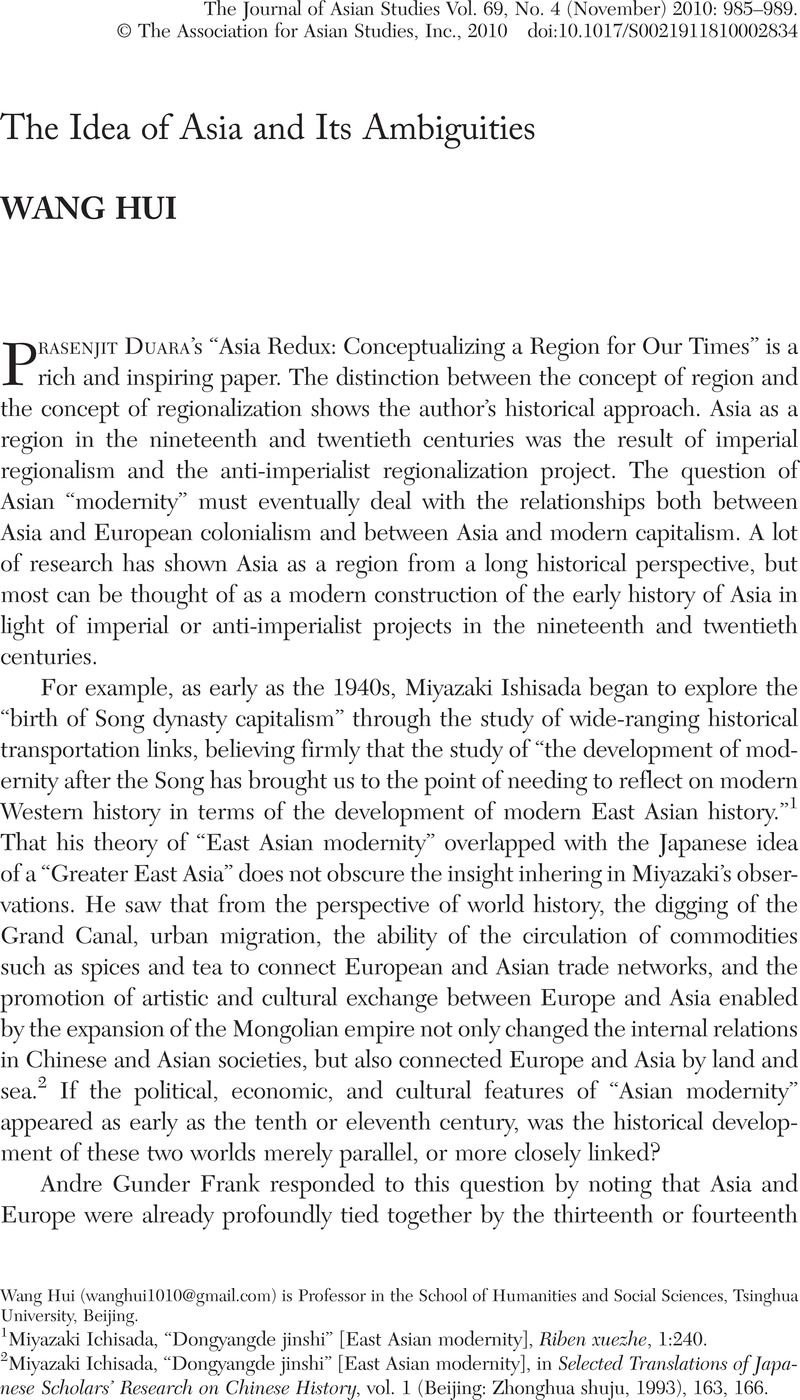Published online by Cambridge University Press: 10 November 2010

1 Miyazaki Ichisada, “Dongyangde jinshi” [East Asian modernity], Riben xuezhe, 1:240.
2 Ichisada, Miyazaki, “Dongyangde jinshi” [East Asian modernity], in Selected Translations of Japanese Scholars’ Research on Chinese History, vol. 1 (Beijing: Zhonghua shuju, 1993), 163Google Scholar, 166.
3 Frank points out that both the European population and European capitalism within the world economy have grown steadily since 1400, and that this process is consistent with the East's decline since around 1800. European countries used the silver they acquired from their colonies in the Americas to buy their way into Asian markets that were expanding at the time. For Europe, the commercial and political mechanisms for this Asian market were unique and effective from the perspective of the worldwide economy. Just as Asia began to decline, Western countries became rising industrial economies through the mechanisms of import and export. In this sense, modern European capitalism resulted both from changes in relations of production within European societies and out of its relationship with Asia. See Frank, Andre Gunder, ReOrient: Global Economy in the Asian Age (Berkeley and Los Angeles: University of California Press, 1998)Google Scholar.
4 Ichisada, “Dongyangde jinshi,” in Selected Translations, 236–38.